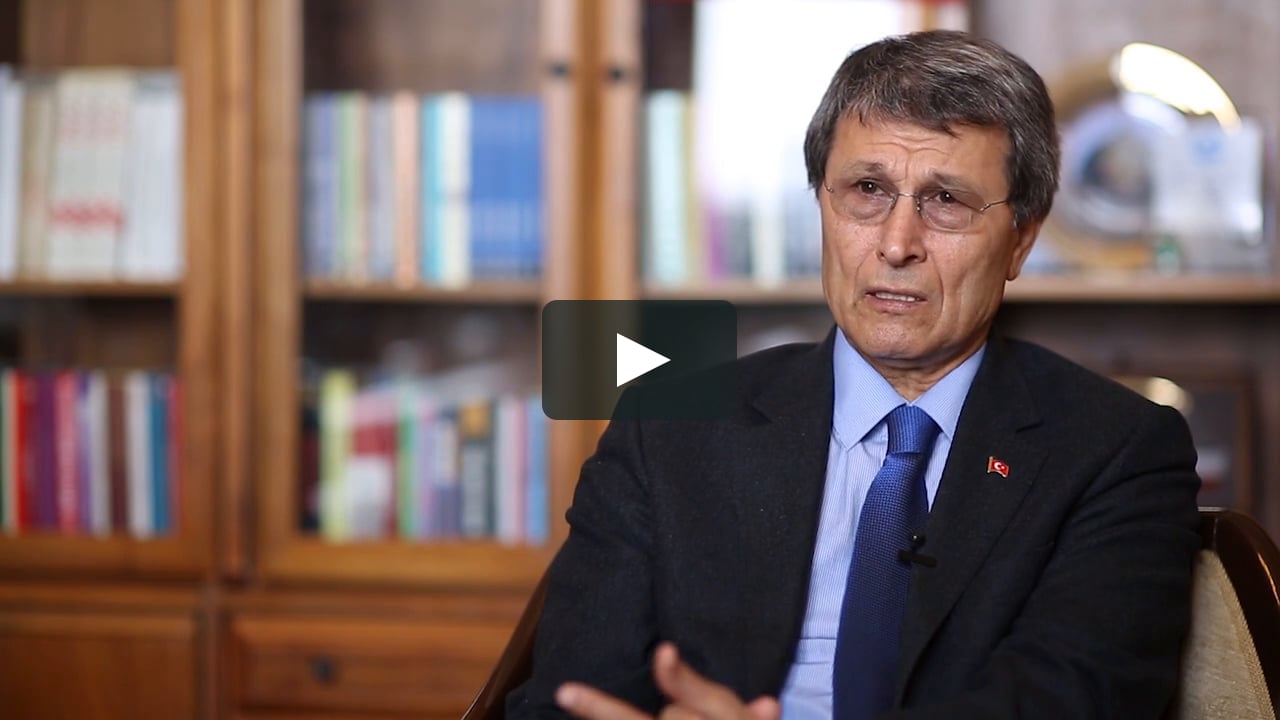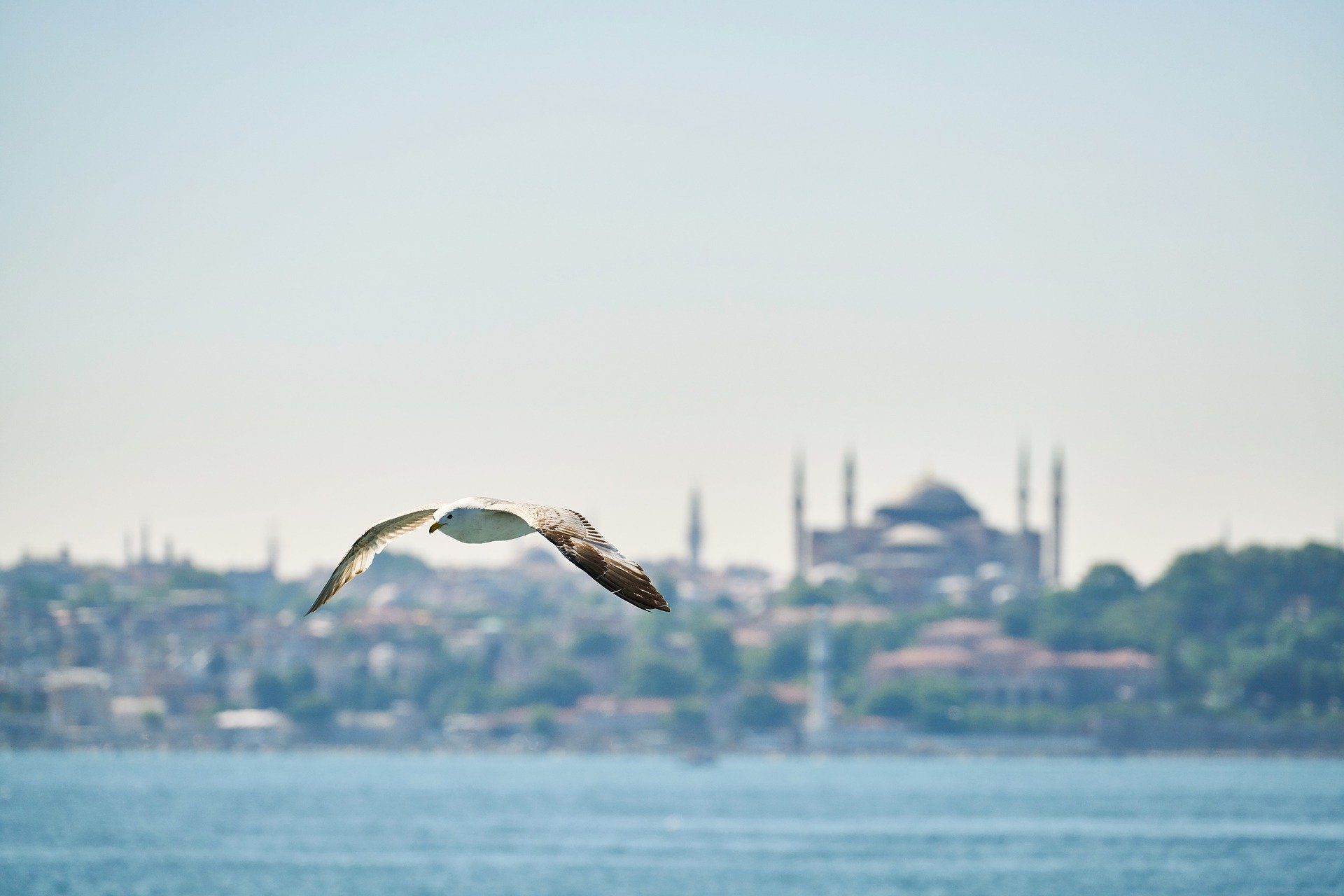Ayasofya
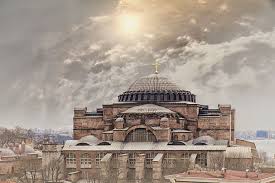
Bir Mimari Şaheser; Aya Sofya
İstanbul’da bulunan en önemli Bizans mimarisi kiliselerden biridir. Tüm Bizans kiliselerinin en görkemlisi Ayasofya’dır. Bu kilise mimarlar Tralles Anthemios ve Miletus Izidorus tarafından tasarlanmıştır. İkinci Ayasofya’nın bu inşaatı 532’de İmparator Justinian’ın emriyle başladı ve daha önceki bir yapının kalıntıları üzerine inşa edildi. Efes, Atina, Roma ve Delphi’den malzemeler getirildi ve bu muhteşem binanın yapımında kullanıldı. Kilise beş yıl sonra 537 yılında ibadete açılmıştır. Ayasofya’da 31-33 metre çapında ve 54 metre yüksekliğinde büyük bir kubbe vardır. Kilise 557 depreminden büyük zarar gördü ve Mimar İzidorus’un yeğeni yapının onarımını denetledi.
Ayasofya’nın inşası sırasında Bizans Roma’nın etkisi altında olduğu için, bu yapı, Bizanslıların standart kilise mimarisi ile Roma mimarisinin ihtişamının bir karışımıdır. Kilisenin orijinal mozaikleri Iconoclasts tarafından ciddi şekilde hasar gördü, ancak Iconoclasm döneminin ortadan kalkmasından sonraki 9. yüzyılda eskisinin yerini yeni mozaikler aldı.
İç yüzeyleri süslemek için kullanılan mozaiklerde dini konuların yanı sıra imparator da bir konu olarak kullanılmıştır. Bir mozaik Meryem Ana’yı imparator Justinian ve Constantine’nin yanlarında oturanla tasvir eder. Başka bir mozaik, İsa’yı İmparator Leon 7’nin önünde diz çökmüş bir tahtta oturduğunu gösteriyor. Başka bir mozaik, Meryem ve Vaftizci Yahya’nın İsa’dan insanlar adına merhamet için yalvarırken gösteriyor. Tüm bu mozaikler Helenistik etkilerin izlerini taşır. Ayrıca emperyal ailenin diğer üyelerinin birkaç mozaik “portresi” de var. Portre sanatı Bizans döneminde çok gelişmiştir. Fatih kenti ele geçirdikten sonra bu yapı Müslümanlar tarafından ibadet için kullanıldı. 1934 yılında Atatürk yapının müze olarak kullanılmasını emretti.
An Architectural Masterpiece; Hagia Sophia
The most important Byzantine architecture found in Istanbul consists of churches. The most magnificent of all of the Byzantine churches is the Hagia Sophia. This church was designed by the architects Anthemios of Tralles and Izidorus of Miletus. This construction of the second Hagia Sophia was started in 532 by the order of the Emperor Justinian and was built over the ruins of an earlier structure. Materials were brought from Ephesus, Athens, Rome, and Delphi and were used in the construction of this magnificent building. The church was opened for worship five years later, in 537. The Hagia Sophia has a diameter of 31-33 meters and a height of 54 meters and is covered with a large dome. The church was considerably damaged by the earthquake of 557 and the nephew of the Architect Izidorus supervised the repair of the structure.
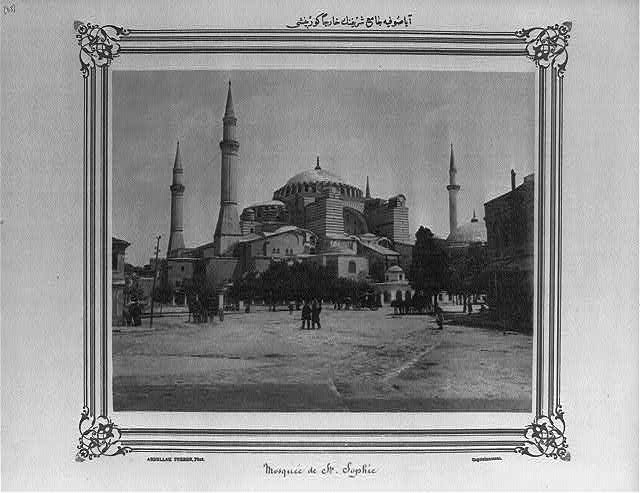
Hagia Sophia 1880 – 1900 Aya Sofya
A symbol of Christian and Islamic heritages, Saint Sophia towers above the Golden Horn (photo) and the Bosporus strait connecting Europe and AsiaBecause Byzantium was strongly under the intluence of Rome at the time of the construction of the Hagia Sophia, this structure is an amalgam of the magnificence of Roman architecture with the standard church architecture of the Byzantines. The original mosaics of the church were severely damaged by the Iconoclasts, but new mosaics replaced the former in the 9th century after the period of Iconoclasm had disappeared.
Besides the religious subjects of the mosaics used to decorate the interior surfaces, the emperor was also used as a subject. One mosaic depicts the Virgin Mary with the emperors Justinian and Constantine sitting at her sides. Another mosaic shows Jesus sitting on a throne with the Emperor Leon 7 kneeling before him. Another mosaic is of Mary and John the Baptist imploring Jesus for mercy in the name of the people. All these mosaics bear traces of Hellenistic influences. There are also several mosaic “portraits” of other members of the imperial family. Portrait art was very advanced during the Byzantine period. After Fatih captured the city this structure was used for worship by the Moslems. In 1934 Ataturk ordered that the structure be used as a museum.
More Reading
Deciphering the “Eighth Wonder of the World”
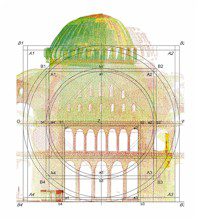 Just like the entire Hagia Sophia, the south wall is also based on the proportions of a double circle and a double squareAlmost one and a half thousand years after its construction in the center of ancient Constantinople, Saint Sophia* has divulged the secret of its design principle. Volker Hoffmann, professor at the Institute for Art History at the University of Bern, deciphered this using state-of-the-art HDS laser technology from Leica Geosystems. Some of the first laser evaluations went on show for the first time in mid July 2004 in Istanbul at the Congress of the International Society for Photogrammetry and Remote Sensing (ISPRS) and attracted numerous visitors. In mid-October, the Leica HDS3000 was used to record the floors of this building. The handheld laser meter Leica DISTO™ also played an important role at an early stage of the research project.
Just like the entire Hagia Sophia, the south wall is also based on the proportions of a double circle and a double squareAlmost one and a half thousand years after its construction in the center of ancient Constantinople, Saint Sophia* has divulged the secret of its design principle. Volker Hoffmann, professor at the Institute for Art History at the University of Bern, deciphered this using state-of-the-art HDS laser technology from Leica Geosystems. Some of the first laser evaluations went on show for the first time in mid July 2004 in Istanbul at the Congress of the International Society for Photogrammetry and Remote Sensing (ISPRS) and attracted numerous visitors. In mid-October, the Leica HDS3000 was used to record the floors of this building. The handheld laser meter Leica DISTO™ also played an important role at an early stage of the research project.
Every point of Saint Sophia’s main dome is recorded in 3D in this HDS laser scan file. Using the Cyclone software from Leica Geosystems, it is possible to view and measure the building from various perspectives on the PCFloating with apparent weightlessness over the main room is the vast dome of the Cathedral of Saint Sophia. Commissioned by Emperor Justitian during the late antiquity period, this UNESCO World Cultural Heritage site is regarded as the eighth wonder of the world. According to the plans drafted by the mathematician Anthemios von Tralles and the architect and structural engineer Isidoros von Milet, the “Aya Sofya”, which is now open to the public as a museum, was built in six years during 532 and 537 AD. However, the original plans of this building have been lost without a trace. For hundreds of years, experts have tried to fathom just how the scientists and artists working in the 6th century managed to construct a freely suspended dome measuring almost 56 meters high and 31 meters wide, supported only by four pillars. Considering the technical equipment available at the time of its construction, many experts still regard this building even to this day as one of the boldest feats of construction ever to have been achieved by the human hand.
The “impossible task” of determining the dimensions
The pillar heights of the south wall also follow the uniform design principle to the precise centimeter of the “master plan” deciphered by Volker Hoffmann“The key experience on entering the main room through the emperor’s gate, which immediately presents itself in full view exposing its full width and height up to the vertex of the huge dome, is the impossible task of finding a clear relationship to the proportions and an accurate calculation of the dimensions“ writes the Marco Polo travel guide. This phenomenon, which was intended by its architects, is produced by the spatial structure, the apparent weightlessness of the dome, and the bewildering abundance of direct and indirect lighting effects. Thanks to the work of the Bernese art historians, insights into these dimensions and their consistent application by the architects and builders of the day are now available.
Constructional wonder of the world from one to one point zero six
In the evening, after having closed Saint Sophia for visitors, Professor Volker Hoffmann and Nicholas Theocharis are able to complete their work on the floorVolker Hoffmann working together with his employee Nikolaos Theocharis in a research project sponsored by the Swiss National Fund found that the entire design of Saint Sophia is based on an analemma. This is a projection technique that was described by Ptolemaeus. This technique made it possible to interconnect the earth and the canopy of heaven in accordance with the view of the world at the time: the sphere representing the sky, god and the church, and the cube representing the earth with its four directions, above and below, and the Emperors real. For Saint Sophia, according to Volker Hoffmann’s findings, Anthemios and Isidoros devised an overlapping double-square analemma as a uniform design shape for the ground plan and the elevation of the cathedral, penetrating each other three-dimensionally in the form of a cube and sphere. After performing 3-D laser measurements with the aid of a HDS™ Leica 3000 laser scanner at Saint Sophia, the two scientists from the University of Bern used the technique known as reverse engineering to decipher a “master plan” generated some 1470 years ago. It is based on a ratio of 1 to 1.06 of the small square to the large square. On the basis of the investigations they have performed to date, the researchers have arrived at the conclusion that “there are no layout-related points or lines in Saint Sophia that cannot be deduced from this master plan using geometric logic.” The Leica Disto also played an important role. In Volker Hoffmann’s words: “Thanks to this compact and highly practical laser measuring instrument, we were able for the first time to determine the precise distances of the four supporting pillars at the simple press of a button. This was highly important at the start of our work for the calculation of the dimensions of the double circle/double square.”
Ingenious design principle reconstructed
Each year, over one million visitors admire Saint Sophia, the ancient eighth wonder of the worldThis design and building principle described by Volker Hoffmann as the “master plan” of Saint Sophia is truly ingenious. “Putting it simply, the master plan was marked out with pegs and strings on the building site, meaning that the builder then only had to measure in the double square, which in turn allowed him to transfer across very precisely all the other points (pegs) and lines (strings and/or lines of bearing) of the Saint Sophia architectural elements”, says the professor for architectural history and preservation of historical monuments from the University of Bern. In the second half of April 2005, following the completion of the laser evaluations and after consulting the museums director Mustafa Akkaya, results of this research work are to be presented in the form of an exhibition for the 14 million inhabitants of Istanbul and for the scores of visitors that flock to Saint Sophia. The two thousand-odd photogrammetry and remote sensing experts who travelled to the ISPRS Congress in July 2004 have already gained an insight into this in Istanbul at the Leica Geosystems exhibition stand. The final results are to be presented also in exhibitions in Berlin and Bern. Exhibition sites in the US and in France are also foreseen.
Until now, no one had uncovered the secret of the design principle used in this building, which is devoted to Holy Wisdom, Saint Sophia –at least not until Volker Hoffmann, together with his employee Nikolaos Theocharis, finally succeeded in deciphering it using state-of-the-art 3-D laser measurement techniques some 1470 years later. With is long history as the principal imperial church of early-Christian Greek Orthodoxy, as a mosque, and now as a museum, Saint Sophia represents the history of the Occident and the Orient as no other building can.
Comments by: W P Mallow
Your site uses “Saint Sophia” The name is “Hagia Sophia” which is Greek for “Holy Wisdom”. Justinian would NOT have named “his church” after a woman.
Source: https://www.turizm.net/turkey/history/hagiasophia.html
Fatih Sultan Mehmet’in aziz emaneti Ayasofya-i Kebir Camii Şerifi
-
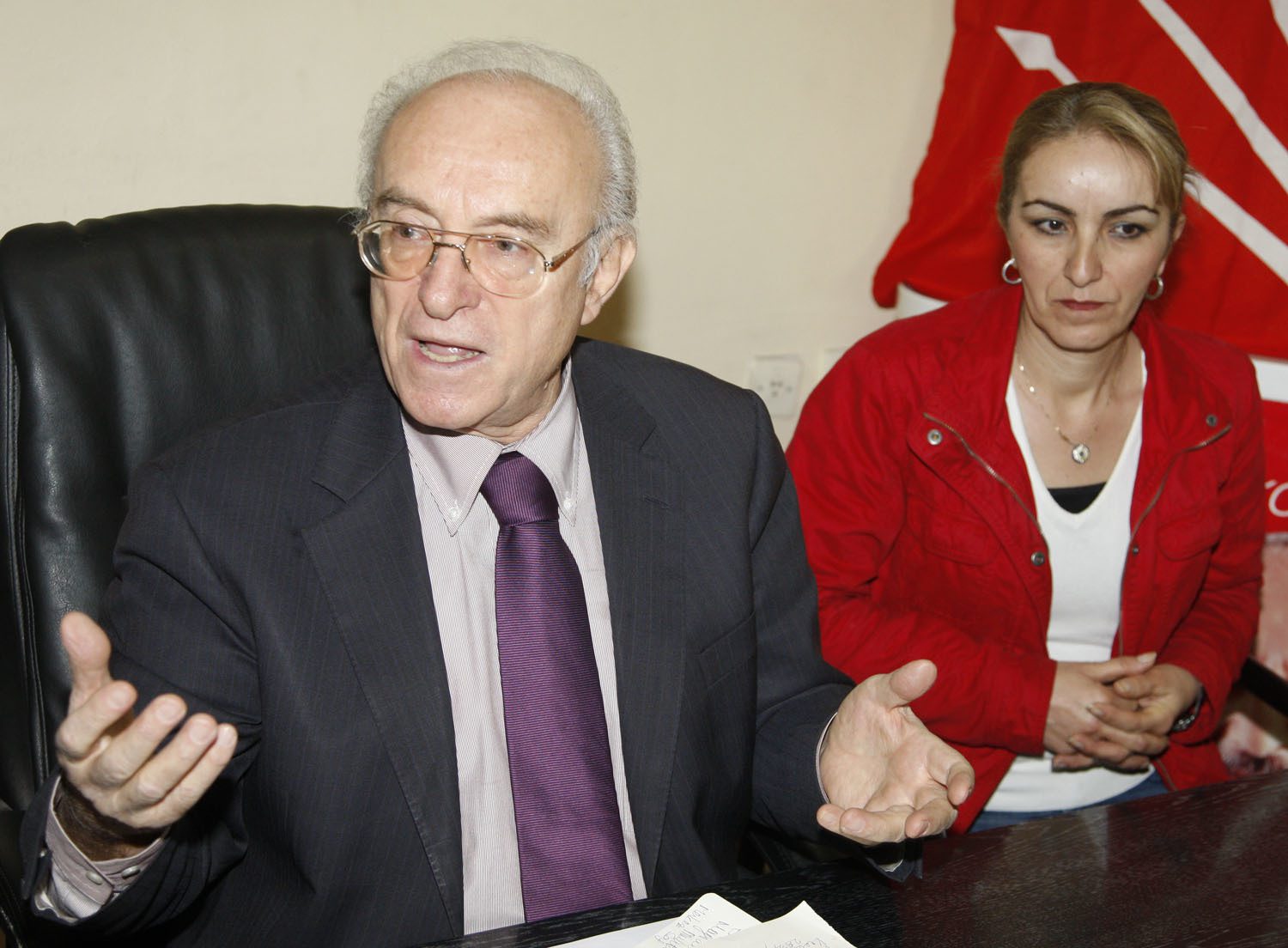
1994’de Cami yapılması reddedilmişti
AYASOFYA’nın MÜZE yerine CAMİ OLMASI KONUSU 26 Yıl Evvel de Siyasetin Gündemindeydi… O zaman CHP Direndi; Bugün ise Geçit Verdi… (‘Ayasofya’nın müzeden camiye dönüştürülmesi’ konusundaki […]
-
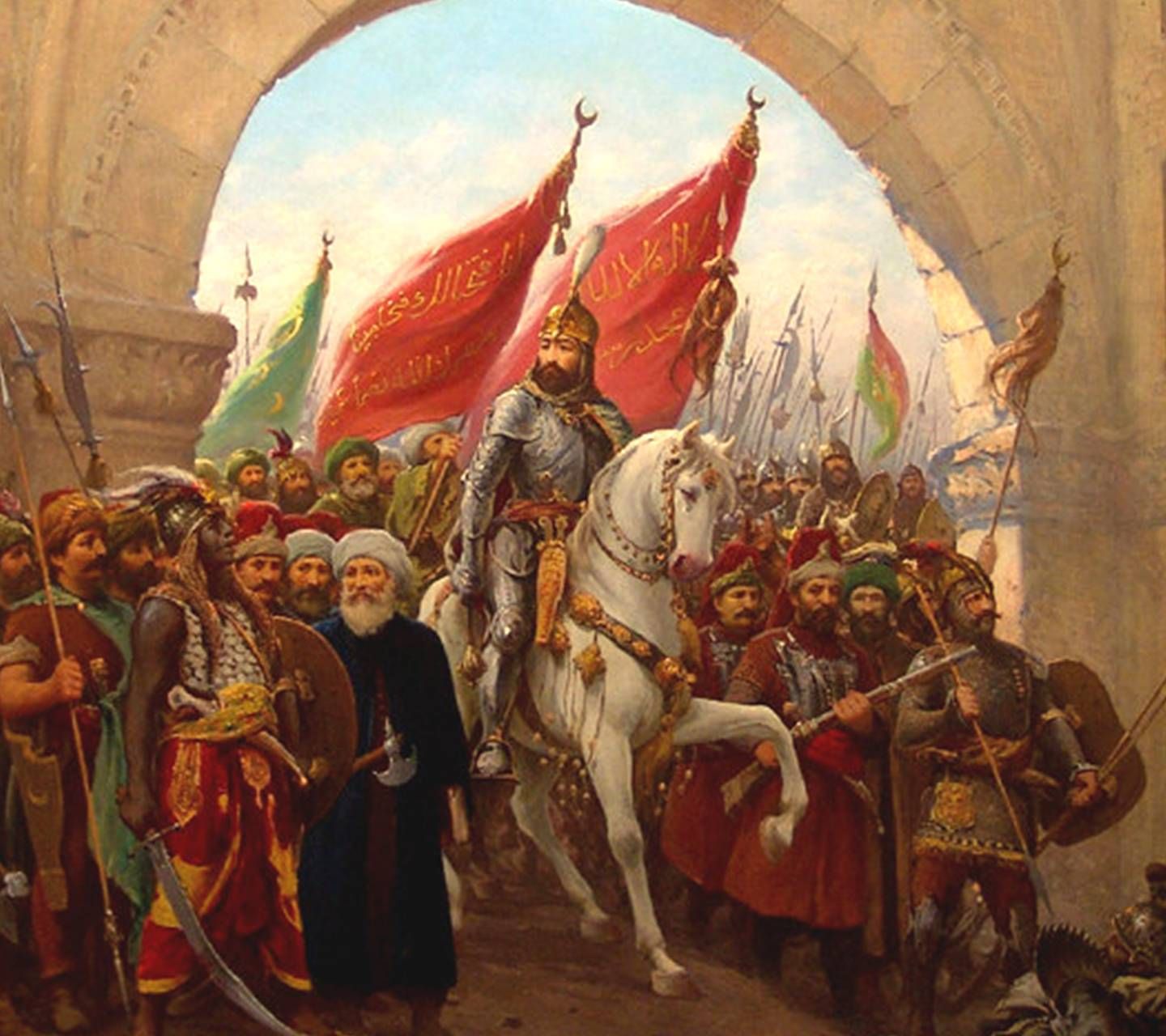
İŞTE FATİH’İN VAKFİYESİ
Allah’ın yarattıklarından Allah’a ve O’nun rüyetine iman eden, ahirete ve onun heybetine inanan hiçbir kimse için, sultan olsun melik olsun, vezir olsun bey olsun, şevket […]
-

Ayasofya’nın ardından
AKP İzmir Buca İlçe Yönetim Kurulu Üyesi Ercan Kırdağ, Ayasofya’nın ibadete açılması kararının ardından Atatürk için “Taştan adam eriyor” ifadesini kullandı. Kırdağ daha sonra tweetini […]
-
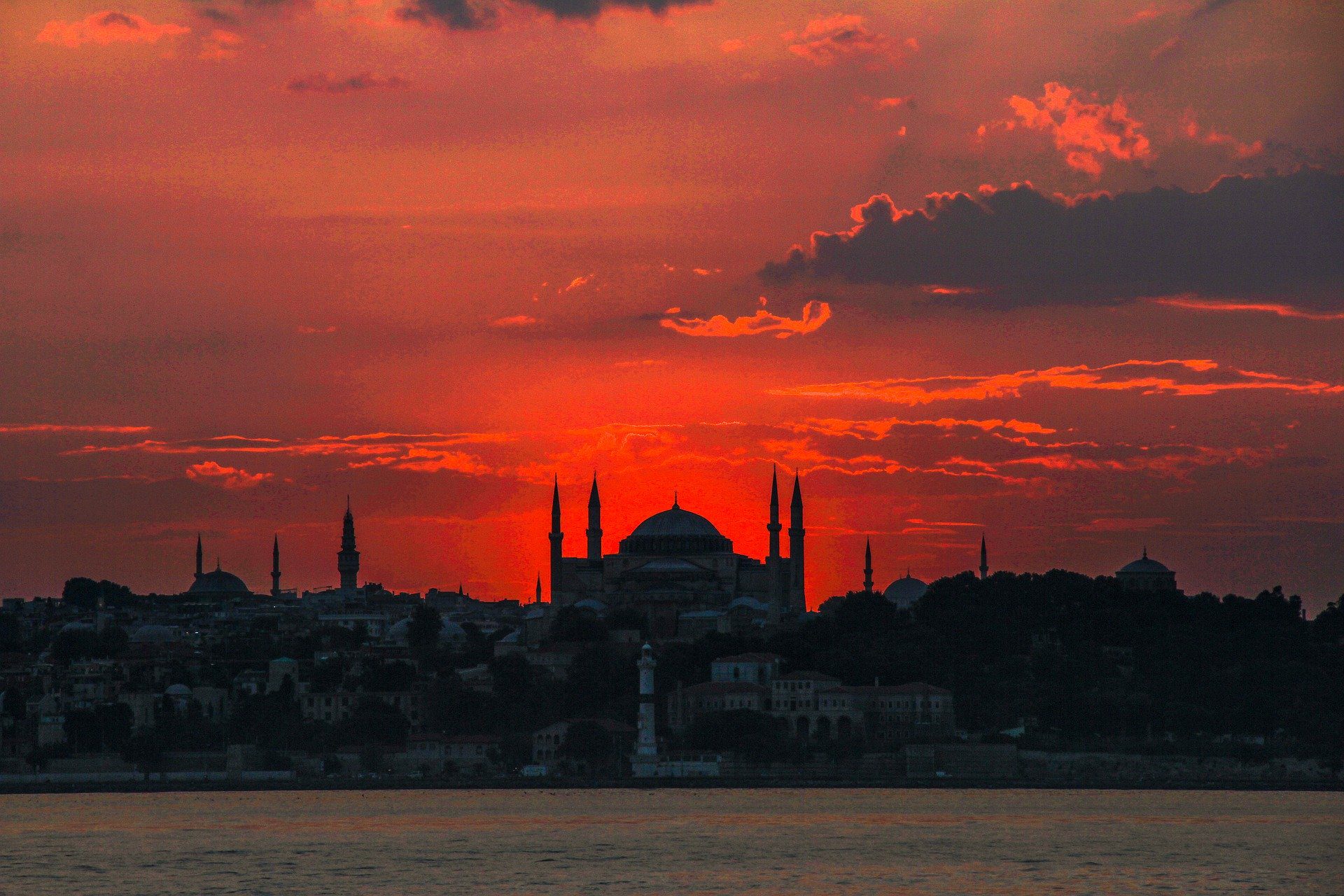
Ayasofya ibadete mi açıldı, yoksa ATATÜRK’ÜN BİR KARARI MI YOK EDİLDİ?
AYASOFYA Ayasofya ibadete mi açıldı, yoksa ATATÜRK’ÜN BİR KARARI MI YOK EDİLDİ? Diğer husus: İSTANBUL İŞGAL EDİLMEDİ Mİ? Edildi! FATİH’İN TORUNLARI İSE AYASOFYA’YA SAHİP ÇIKAMADILAR! […]
-
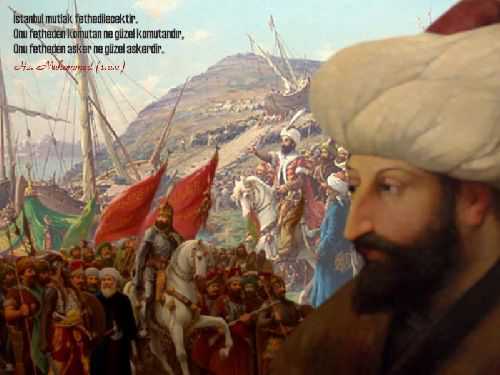
Cumhurbaşkanı Erdoğan, Ayasofya kararı sonrası Ulusa seslendi
Cumhurbaşkanı Erdoğan, Danıştay’ın 1934’teki Bakanlar Kurulu’nun camiden müzeye dönüştürülmesi kararını iptal etmesinin ardından saat 20.53’te ulusa seslenmeye başladı. İlk namazın önümüzdeki Cuma günü kılınacağını belirten […]
-

YAŞASIN BÜTÜN DERTLERİMİZ SONA ERDİ
Şuraya bir slogan daha ekleyelimYol yaptılar/Köprü yaptılar/ Ayasofyayı açtılar İşsizlik canımızı almaya devam ediyor…Geçiniz efendim geçiniz.Ne yapacaksınız işi gücü?Bakın işte yol yaptılar/Köprü yaptılar/ Ayasofyayı ibadete […]
-
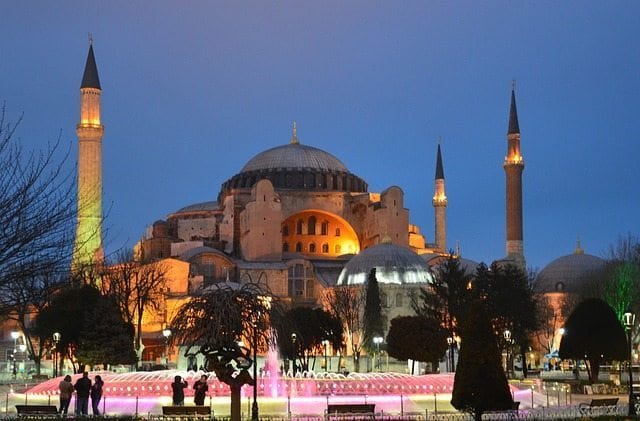
Ayasofya Tartışmasında Son Nokta
Ayasofya Müze – Cami Tartışmasında Son Nokta /// Yusuf Halaçoğlu’nun İddialarına Belgelerle Yanıtlar #cengizözakıncı #yusufhalaçoğlu #ayasofya Ayasofya’yı camiden müzeye dönüştüren 24.11.1934 günlü kararnamedeki K. Atatürk […]
-

Ayasofya’nın statüsü değişirse Türkiye ekonomi ve güvenlikte sorunlarla karşılaşır
Doğu Perinçek’ten Cumhurbaşkanı’na arz: Ayasofya’nın statüsü değişirse Türkiye ekonomi ve güvenlikte sorunlarla karşılaşır Vatan Partisi Genel Başkanı Doğu Perinçek, Ayasofya’nın müzeden camiye çevrilmesinin Türkiye’yi bölgemizde […]
-
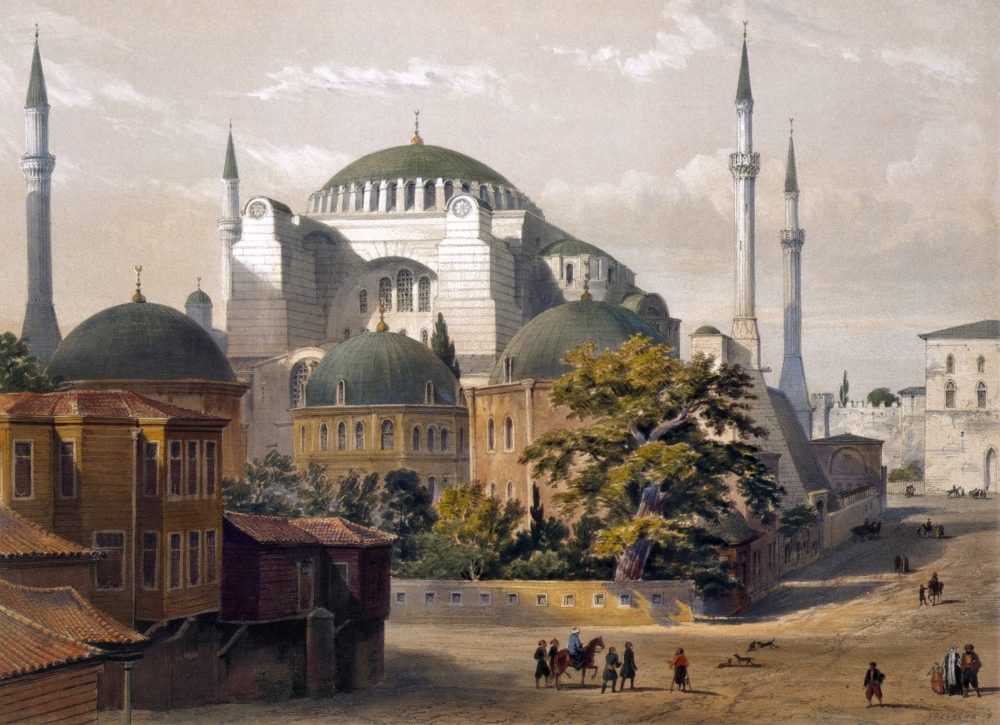
AYASOFYA’NIN STATÜSÜ
AYASOFYA MUZESİNİN STATUSUNU DEGİSTİRİLMESİ DOSTLAR AYASOFYA KONUSUNDA (DİP NOTLARLA) TOPLU BİLGİ VE KAYNAKCA İCEREN AYRİCA ONERİLER İHTİVA EDEN 14 SAHİFELİK AYASOFYA HAKKİNDAK, RAPORU KONUYU İYİ […]
-

Ayasofya Camii, Müslümanların En Kutsal Mabetlerindendir
Ayasofya Camii, Müslümanların En Kutsal Mabetlerindendir Alaeddin Yalçınkaya Ateistliğini her fırsatta izhar eden Yunanistan Başbakanı Çipras’ın iki günlük Türkiye programında Ayasofya ve Heybeliada […]
-

İSTANBUL’UN FETHİNDEN SONRA AYASOFYA KİLİSES İNİN CAMİYE ÇEVRİLİŞİ
Doç. Dr. Said ÖZTÜRK (*) Müslümanların İstanbul’u fetih arzulan çok erken tarihlerde başlamıştır. Hicrî 52, miladi 672 yılında Hz. Muhammed’in mihmandarı olan Ebu Eyyub el-Ensarî […]
-

AYA SOFYA (THE SAINT SOPHIA) CHURCH IN ISTANBUL
SİZE SON GÜNLERDEKİ POLİTİC GELİŞMELERLE İLGİLİ ECUMENİSM YAZIMI GÖNDERMİŞTİM. BU GÜN DE AYA SOFYA İLE İLGİLİ YAZIMI GÖNDERİYORUM. AYA SOFYA (THE SAINT SOPHIA) CHURCH […]
-
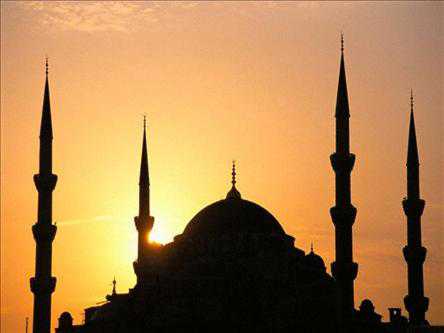
AYTUNÇ ALTINDAL : Ayasofya Nedir ?, Ne Değildir ?
Kiliselerin ana rahmi örnek alınarak inşa edildiğini, bunun mason mabetlerinde de uygulanan bir prensip olduğunu, Sophia’nın “dişil prensip”e denk düştüğünü öğrendiğinizde, Papa’nın Ayasofya’yı ziyaret ederek […]
-
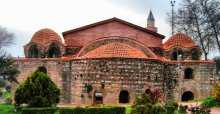
AYASOFYA DA DAHİL 63 Camii Kilise Oluyor..
AKP hükümetinin aldığı AZINLIK VAKIFLARININ mülklerinin iadesi kararı gereğince Türkiye sınırları içerisindeki birçok camiinin statüsünün değişeceği ve bu camiilerin toplam sayısının 63 civarında olduğu söyleniyor. […]
-

Yunanistan’ı Ayağa Kaldıran ‘Türkiye Ortaklığı’
İstanbul’da Ayasofya Müzesi yakınlarındaki bir otelin hissedarlarından olan Trigoni, bunun için “görülmedik saldırılara maruz kaldığını” savunarak siyasi hayatına son verdiğini açıkladı. Amerikalı Türk’ün bildirdiğine göre […]
-
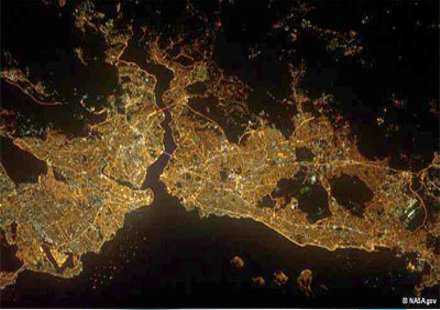
Ayasofya’nın gizemli tünelleri gün yüzüne çıktı
Dünya’nın en eski yapılarından biri olan Ayasofya’nın altındaki tünellerde 15 yıl boyunca inceleme yapan yönetmen Göksel Gülensu ve ekibinin çektiği ‘Ayasofya’nın Derinliklerinde’ adlı belgeselin fotoğrafları […]
KONU HAKKINDA YAZILAR
-
1994’de Cami yapılması reddedilmişti
-
İŞTE FATİH’İN VAKFİYESİ
-
Ayasofya’nın ardından
-
Ayasofya için Halaçoğlu ne diyor?
-
Ayasofya ibadete mi açıldı, yoksa ATATÜRK’ÜN BİR KARARI MI YOK EDİLDİ?
-
Cumhurbaşkanı Erdoğan, Ayasofya kararı sonrası Ulusa seslendi
-
YAŞASIN BÜTÜN DERTLERİMİZ SONA ERDİ
-
Ayasofya Hitabesi
-
Ayasofya Tartışmasında Son Nokta
-
Ayasofya’nın statüsü değişirse Türkiye ekonomi ve güvenlikte sorunlarla karşılaşır
-
AYASOFYA’NIN STATÜSÜ
-
Ayasofya Camii, Müslümanların En Kutsal Mabetlerindendir
-
İSTANBUL’UN FETHİNDEN SONRA AYASOFYA KİLİSES İNİN CAMİYE ÇEVRİLİŞİ
-
AYA SOFYA (THE SAINT SOPHIA) CHURCH IN ISTANBUL
-
AYTUNÇ ALTINDAL : Ayasofya Nedir ?, Ne Değildir ?
-
AYASOFYA DA DAHİL 63 Camii Kilise Oluyor..
-
Yunanistan’ı Ayağa Kaldıran ‘Türkiye Ortaklığı’
-
Ayasofya’nın gizemli tünelleri gün yüzüne çıktı

